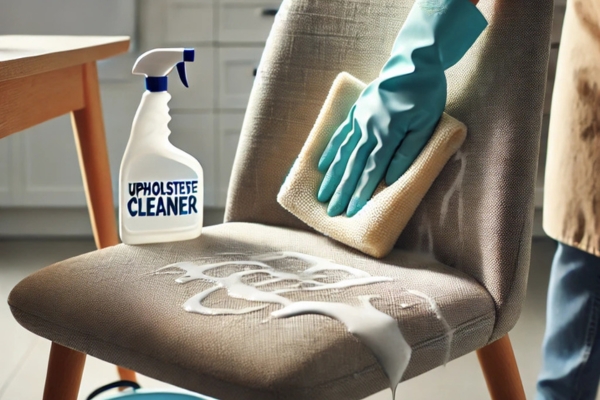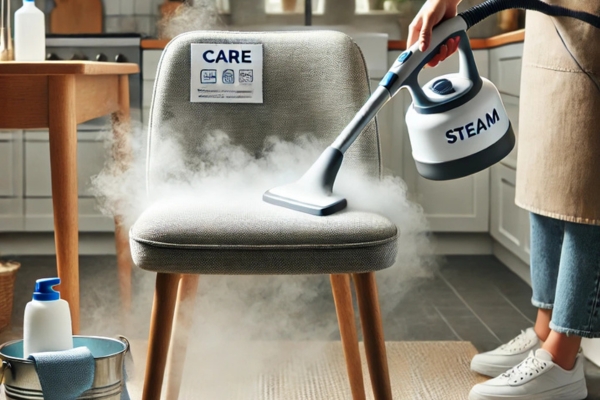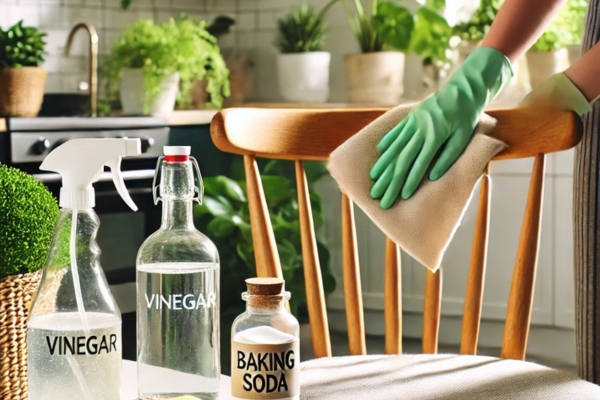Clean cloth kitchen chairs are more than just seating; they’re a part of everyday life. Whether it’s family meals, casual coffee breaks, or festive gatherings, these chairs endure it all—spills, crumbs, and the occasional mishap. Over time, even the most durable fabrics can lose their charm, becoming stained, dusty, and less inviting. A clean chair not only enhances the aesthetics of your dining space but also promotes a healthier and more comfortable environment for your loved ones.
Understanding The Importance Of Clean Cloth Kitchen Chairs
Cloth kitchen chairs aren’t merely functional—they’re a silent witness to family meals, intimate conversations, and celebrations. Over time, their vibrant charm succumbs to the tyranny of daily use. Stains etch themselves as unwelcome memories, dust clings stubbornly, and odors lurk in the fibers. Clean chairs are more than aesthetic; they protect your space from allergens and keep your kitchen feeling fresh and inviting. Neglect? It invites permanent damage, turning your elegant chairs into an eyesore.
Why Clean Cloth Kitchen Chairs Matter For Your Home?
Every home tells a story, and your furniture plays its part. Cloth kitchen chair, as steadfast fixtures of daily life, endure relentless use. From messy breakfasts to festive dinners, they silently bear it all. When left uncleaned, they accumulate bacteria and allergens, subtly tainting your indoor air. Beyond health concerns, dirty chairs send a message—one of carelessness. Sparkling chairs, on the other hand, exude warmth and hospitality, making them a must-clean piece in every home.
Common Problems With Dirty Cloth Kitchen Chair
Grime doesn’t settle quietly. Dirty cloth chairs are an invitation for a cascade of problems. Crumbs embed themselves into fabric, fading colors and forming unsightly stains. Dust dances deep into the weave, dulling textures and hues. For pet owners, fur and odors cling stubbornly, creating a constant battle. Over time, these issues compound, turning your once-beautiful chair into a source of embarrassment.
Assessing The Material And Stains

Not all fabrics are created equal. Before cleaning, identify the material—sturdy polyester? Or perhaps delicate linen? Each demands unique care. Then, scrutinize the stains. Is it an oily blotch from a greasy hand or a dark splotch from spilled wine? Understanding the interplay of material and stain type ensures your cleaning efforts will be both effective and safe.
Pre-Cleaning Preparation

A hasty approach can do more harm than good. Start by vacuuming to remove surface debris, using a soft-bristled attachment for those tricky crevices. Test your chosen cleaning solution on an inconspicuous area to prevent unwelcome surprises like discoloration. Detachable covers? Remove and clean separately, allowing for a more thorough process.
Everyday Maintenance Tips
Why wait for grime to build up? A little daily care keeps bigger problems at bay. Vacuum chairs regularly to keep dust from settling. Spills? Dab immediately—never rub—to halt the stain’s advance. Fabric sprays or protective covers are small investments that shield against wear and tear, preserving your chair for years to come.
Dealing With Specific Stains
Stains, the nemesis of fabric chair, demand tailored solutions:
- Grease: A generous sprinkle of baking soda absorbs oil before you wipe it clean.
- Wine or Coffee: Vinegar and dish soap mixed in water work wonders. Dab—don’t soak.
- Ink: Alcohol-soaked cotton swabs are your precision weapon.
With patience and care, even the most stubborn marks can fade into oblivion.
Deep Cleaning Cloth Kitchen Chair

Sometimes, surface cleaning just doesn’t cut it. Deep cleaning revives tired chairs, removing embedded dirt and grime. Use upholstery cleaners suited to the fabric type. Work the solution into the cloth with a microfiber cloth, ensuring even coverage. Avoid soaking the fabric to protect the padding beneath.
Steam Cleaning Basics

Steam cleaning is both effective and satisfying. The gentle heat penetrates deep into the fabric, lifting grime and killing bacteria. Before starting, ensure the fabric is steam-safe by checking its care label. Slowly guide the steamer over the chair, letting its warmth do the heavy lifting without drenching the material.
Odor Removal Tips
Even after cleaning, odors can linger like an unwelcome guest. Neutralize them by sprinkling baking soda on the chair, letting it sit, and then vacuuming. Alternatively, use fabric sprays infused with natural scents—lavender and citrus work particularly well to leave your chairs smelling fresh.
Drying And Protecting Your Chairs
Drying isn’t just a finishing step—it’s essential. Damp fabric fosters mold, so place chairs in a sunny or well-ventilated area. A fan can speed up the process. Once dry, apply a fabric protector to repel future stains and maintain their pristine condition.
Addressing Special Cases
Not all chairs are straightforward. Non-removable covers or intricate designs demand delicate handling. In these cases, spot-cleaning with a gentle hand becomes vital. Antique chairs? Professional cleaning might be the best course to preserve their legacy.
Eco-Friendly Cleaning Options

Embrace sustainability with natural cleaning solutions. Vinegar, baking soda, and castile soap are powerful yet eco-friendly agents. They’re gentle on your fabric and the environment. Swap disposable wipes for reusable cloths to further reduce waste, keeping your cleaning routine green and guilt-free.
Maintaining Longevity Of Your Kitchen Chairs
Your chairs are an investment—protect them. Rotate their placement to distribute wear evenly. Inspect and tighten joints to keep them sturdy. For ultimate protection, invest in washable slipcovers, ensuring the original fabric remains untouched by everyday chaos.
How To Clean Fabric Kitchen Chairs?
Start with a vacuum to lift surface debris. For minor stains, use a diluted mix of mild detergent and water. More stubborn marks may require upholstery shampoo or professional cleaning. Always follow the manufacturer’s guidelines to prevent accidental damage.
How To Paint Kitchen Chairs?
A fresh coat of paint kitchen chairs can transform tired chairs. Begin by sanding the surface to remove old paint or varnish. Apply a primer for even adhesion, then use high-quality acrylic or chalk paint for a smooth finish. Seal with a protective topcoat to guard against scratches.
Final Thoughts
Clean cloth kitchen chairs aren’t just about appearances—they contribute to a welcoming and hygienic home. From quick maintenance to deep cleaning and even eco-friendly options, there’s a solution for every need. A little effort goes a long way in preserving their beauty and function, ensuring they remain a beloved part of your home’s story.
